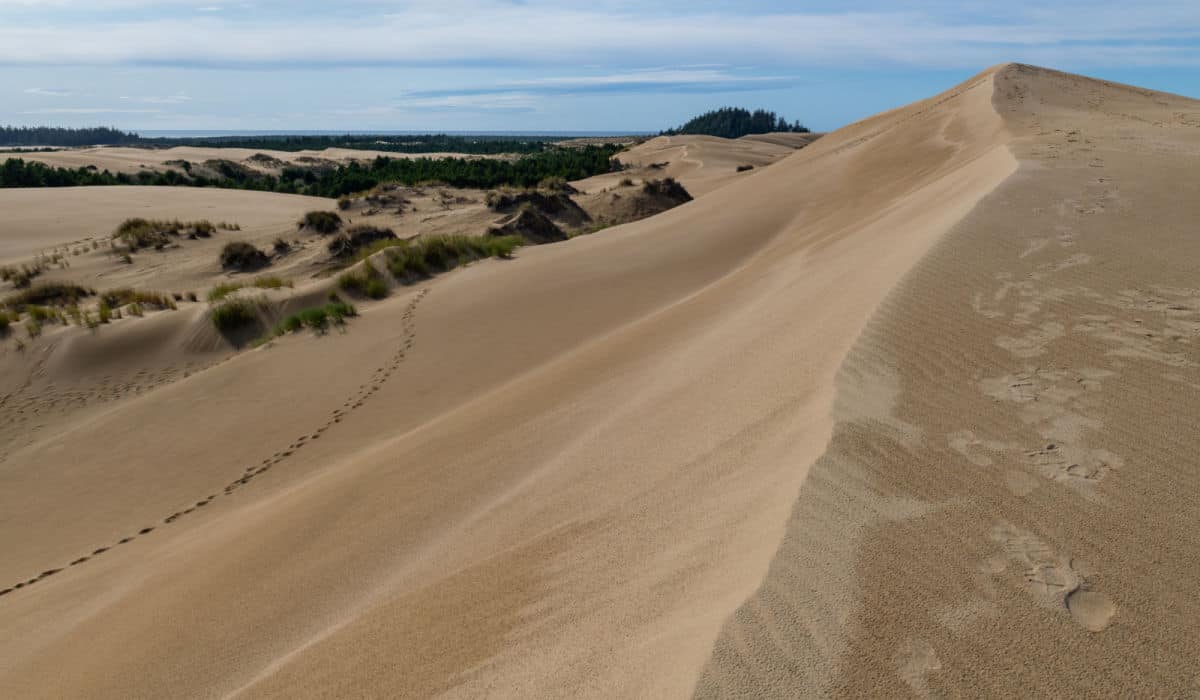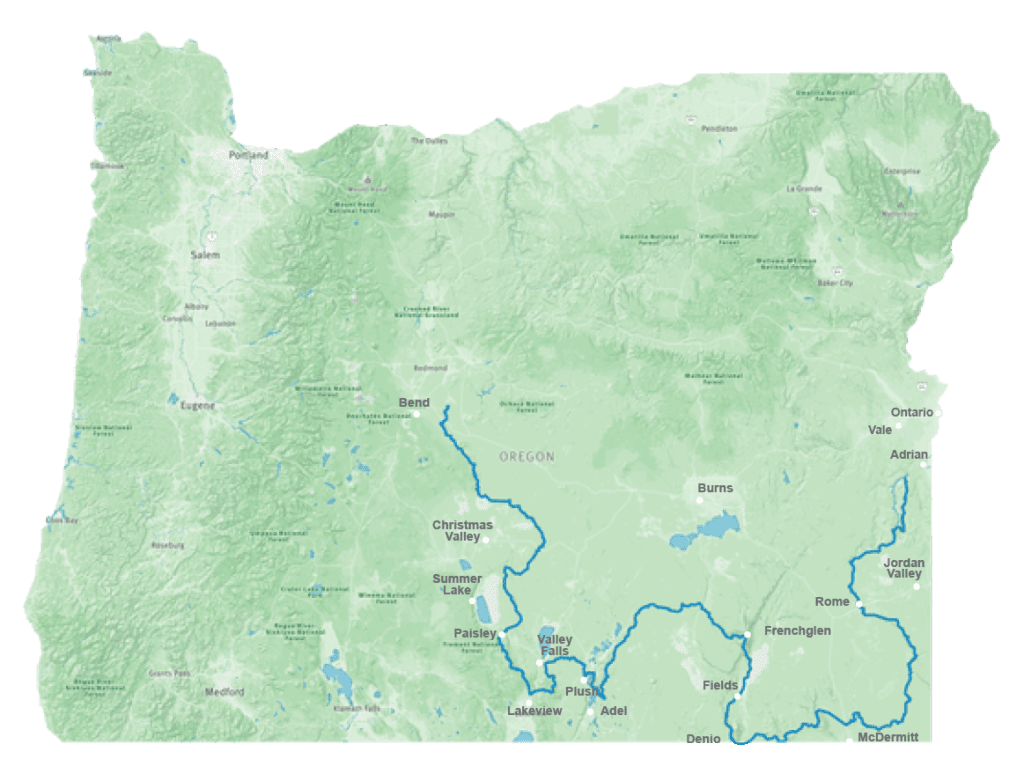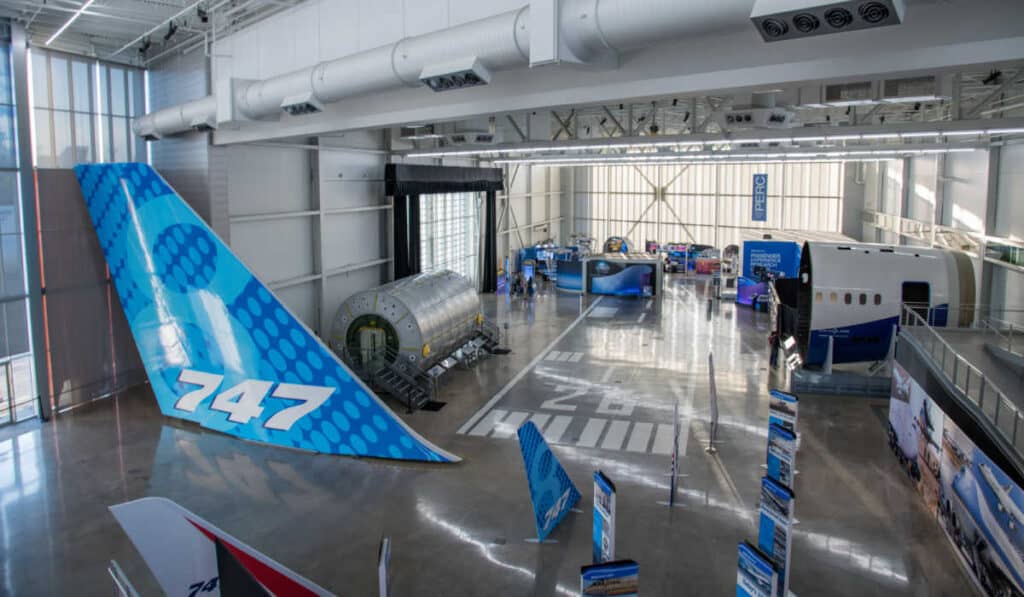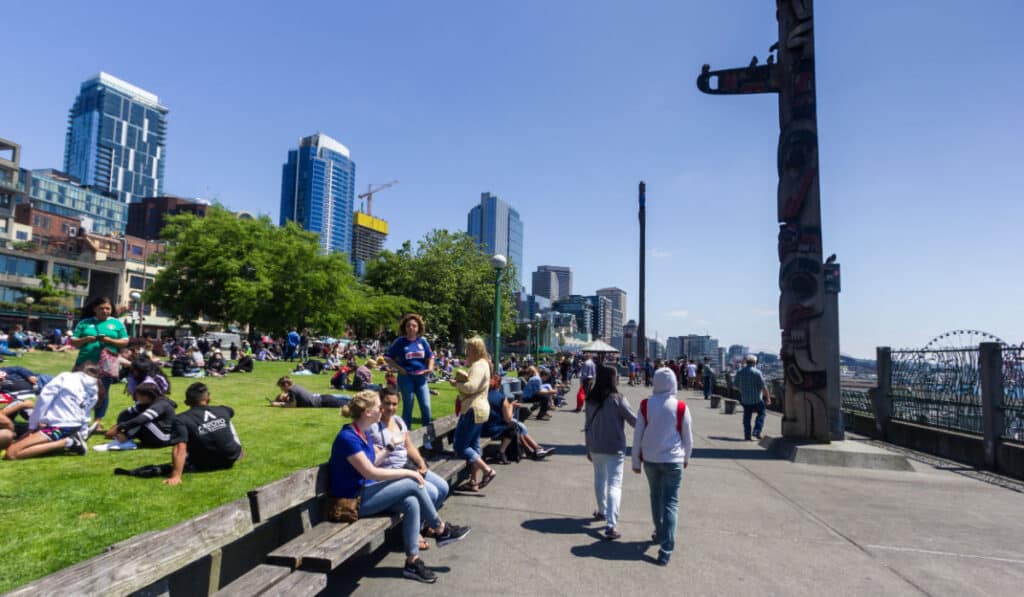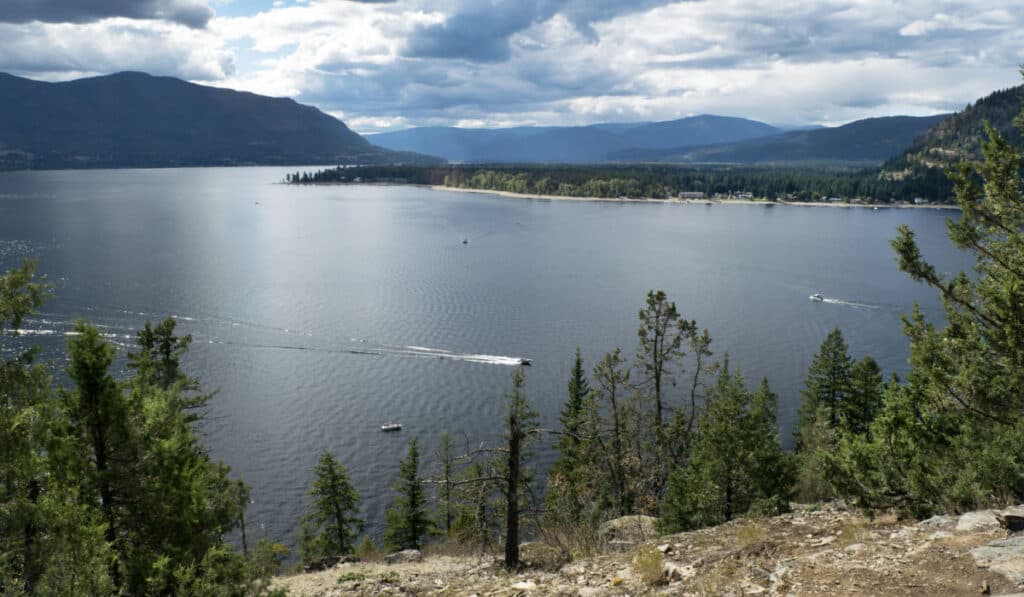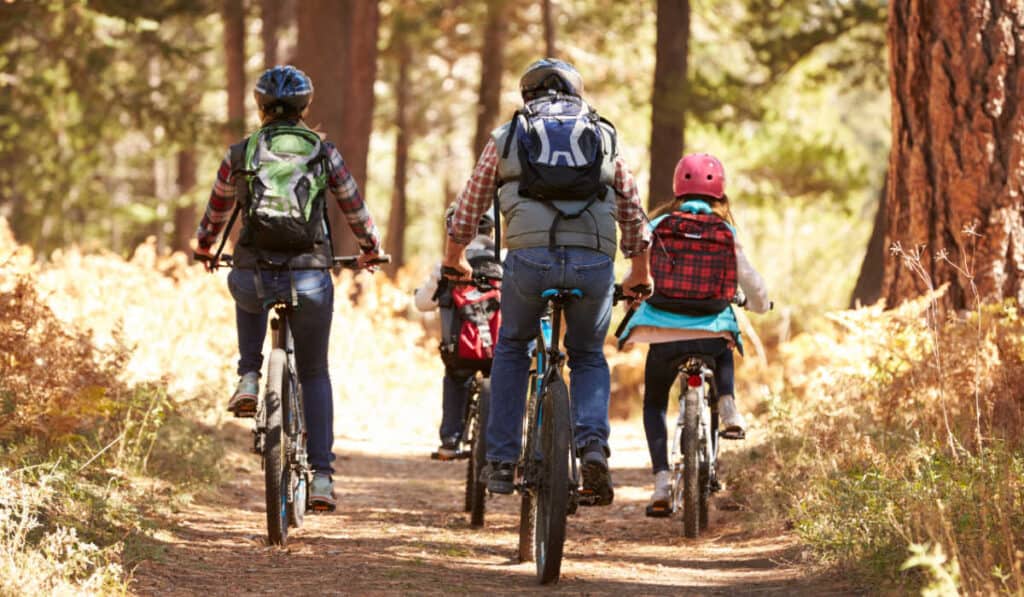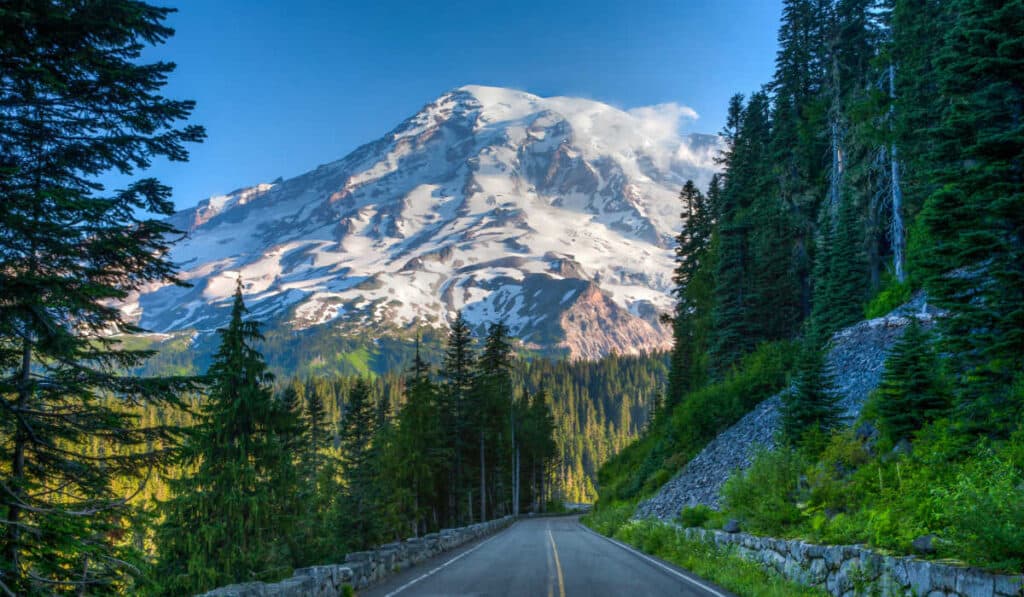Want some nice dry heat? Just head to the Pacific Northwest!
Actually, I just wanted to be the first person in history to put all of those words into one sentence.
However, contrary to popular belief, they’re all true! Large swathes of Washington and Oregon receive very little rain. In fact, the deserts of Washington & Oregon could just as easily be the deserts of Utah or Nevada.
With the exception that they don’t get quite as hot and there is way more to do here.
So, if you’re looking to escape the rain in Seattle and dry out for a bit, let’s head over to Washington’s deserts and see what there is to do!
Oh, and we’ll stop in Oregon on the way.
How Are There Deserts In The PNW?
Here’s how I explained it to my daughter:
All of the rain that Washington & Oregon get comes from the ocean. When the rain clouds try to move across the state they run into the mountains which squish all of the rain out of them, leaving the rest of the state dry and deserty.
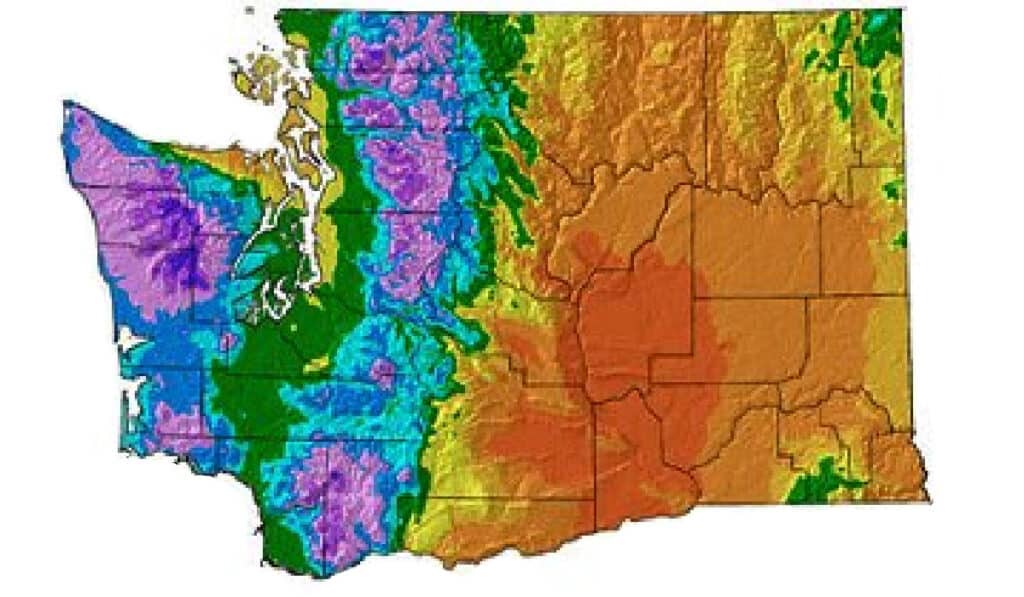
While the actual explanation is a bit more complex, involving rain shadows, air currents, etc. the results in the same. The rain doesn’t make it much past the Olympic Mountains.
This leaves much of the central and southeastern regions in the state with very little moisture.
The driest towns in Washington include Mattawa and Kennewick which respectively get 7.5″ and 8.1″ of rainfall annually.
For reference, Phoenix Arizona gets 9-10″ of rain per year.
Deserts In Washington – 5 Things To Do
The “wet” region of Washington really only takes up a hundred miles or so from the coast. Despite its reputation for lush green forests, more than half the state is actually brown and scrubby.
Given the fact that the deserts of Washington cover so much ground, you’d think that there would be some great things to do there, and you’d be right.
1. Visit The Gingko Petrified Forest
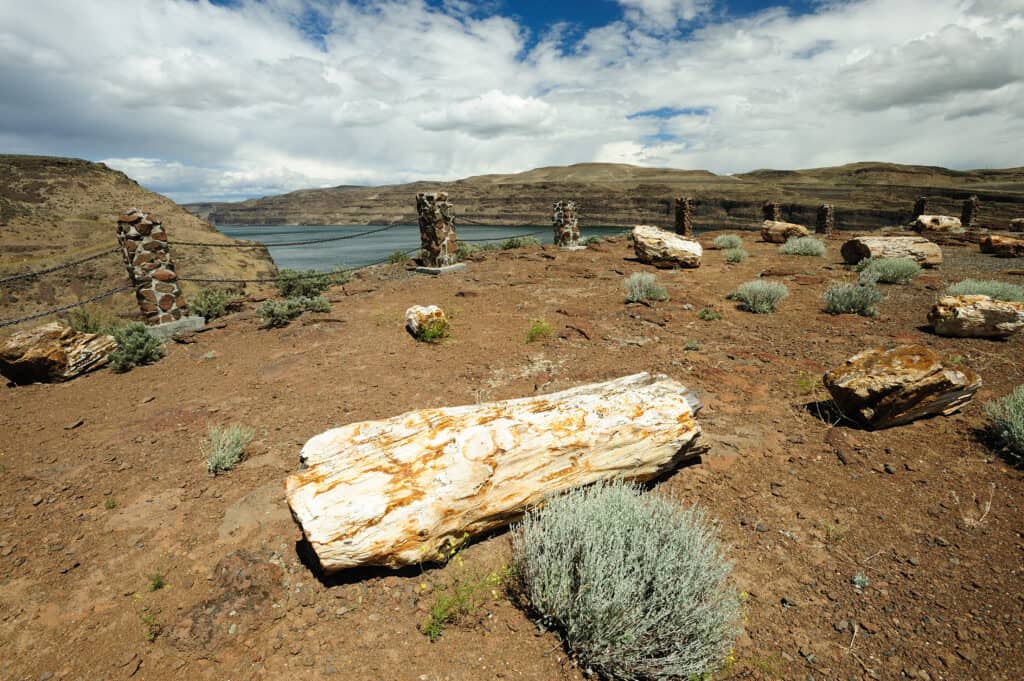
Deserts are a great place to view ancient history. Time passes very slowly in the arid air and it’s no different in Washington. A great example of this is the Ginkgo Petrified Forest in the Wanapum Recreation Area.
The forest is widely considered to be one of the most diverse petrified forests in North America with more than 50 species of ancient wood in the area.
Interesting Note: Petrified wood is the official gem of Washington State
RCW 1.20.090
But it’s not just rocky wood that’s of interest in the area. The Wanapum Recreation area has more than 5 miles of freshwater shoreline, petroglyphs, camping, and much more.
2. Wander Palouse Falls State Park
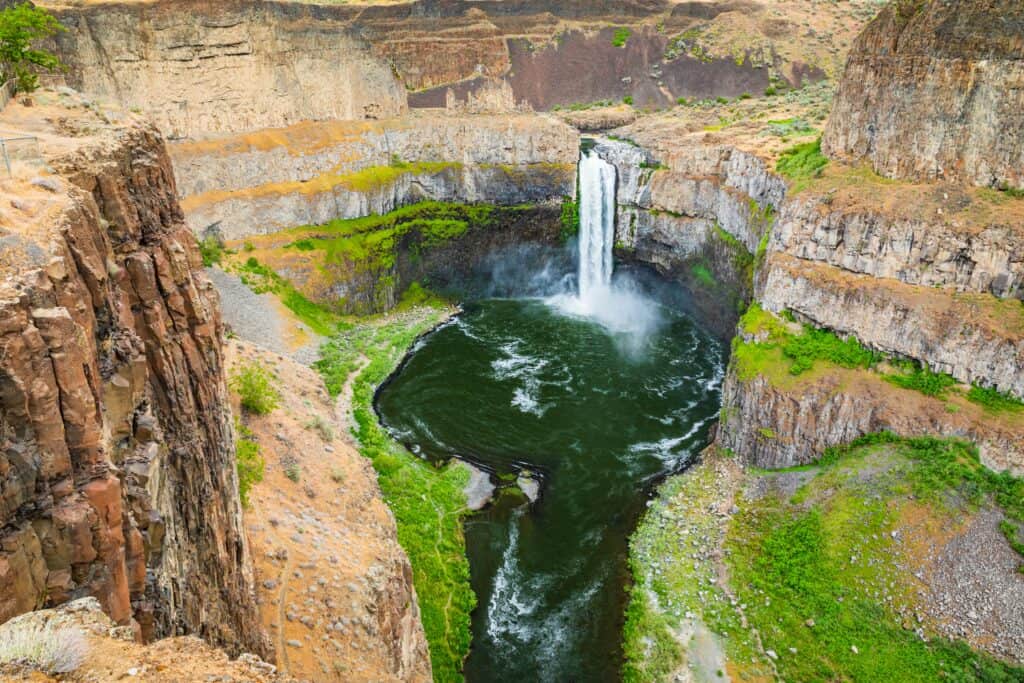
Created by Ice Age floods and glaciers more than 13,000 years ago, Palouse Falls is one of the few majestic waterfalls that are left along this ancient glacial path.
Located within the Grand Canyon-esque Palouse River Canyon, this is one of the most iconic destinations along the Ice Age Floods National Geological Trail. Although you probably didn’t know that was a thing. But don’t worry, I have never heard of it either and still loved a visit to this waterfall.
Located on a 94-acre day-use park, Palouse Falls is the official waterfall of Washington State and well worth the .1-mile walking path to access some incredible views and photography opportunities.
3. Stop At Dry Falls State Park
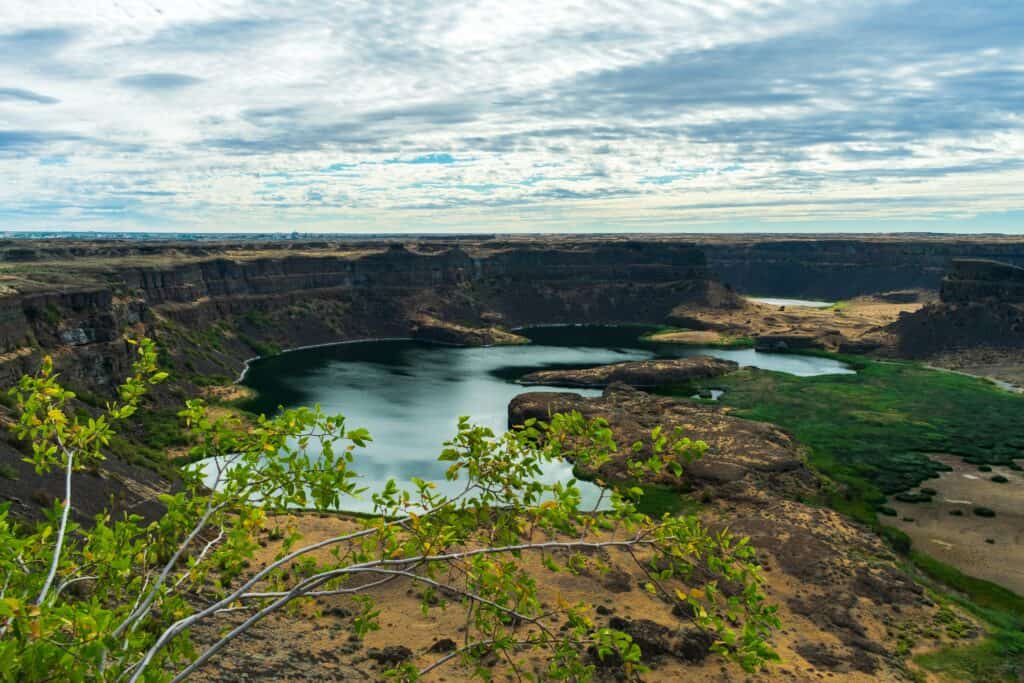
Speaking of falls caused by massive ancient ice flows, Dry Falls State Park is an incredibly scenic location even though its waterfall has long since run dry.
The waterfall that was originally here (and for which the park is named) was gigantic. In the picture above, imagine it cascading over the entire length of the cliff. At its peak, it was more than 4x the size of Niagra Falls. Today, the 3.5 miles cliff simply provides a 400-foot vantage point in which to look out over the park’s dark freshwater lakes.
There is much to do in this park so bring a tent and plan on spending a few days enjoying the striking scenery!
4. Juniper Dunes Wilderness
Juniper Dunes Wilderness is aptly named and is one of the many areas in Washington that you can go to truly escape.
There are no maintained trails on this 7,000+ acre wilderness but there are lots of desert wildflowers and areas to explore.
Just be sure to mark your vehicle’s location on your phone or GPS before you wander off into the desert!
5. Moses Coulee/Breezely Hills Preserve
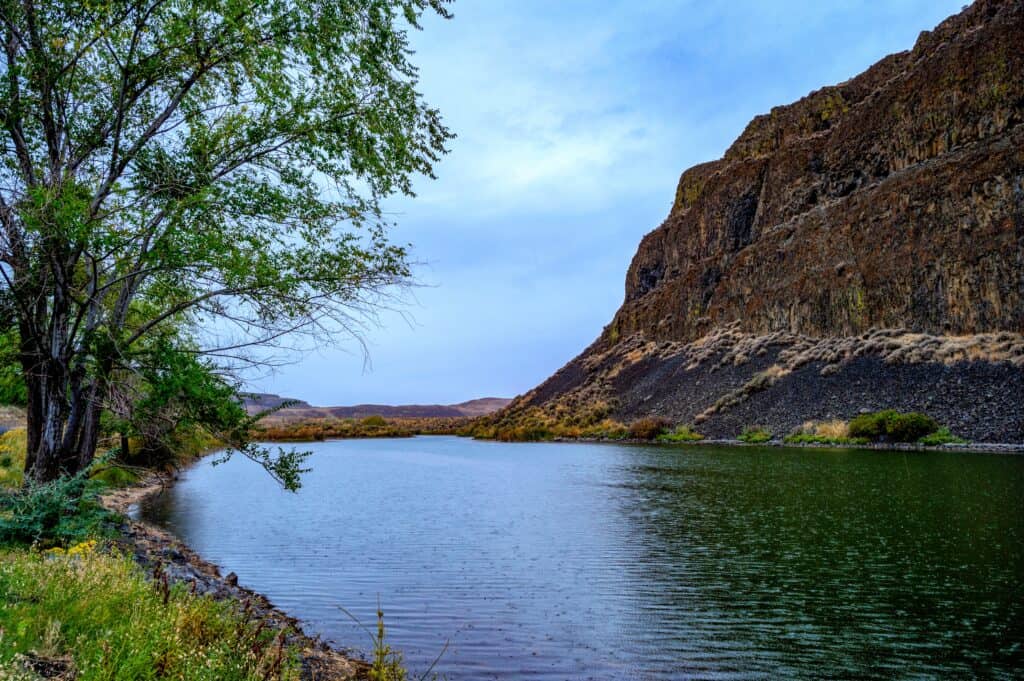
If you’re in the mood for more wildflowers, the area just east of Wenatchee gets just enough rain to support an incredible array of flowers, despite its desert status.
The Breezley Hills Preserve stretches over 5,000 conserved acres of water, rocks, trees, and general natural beauty.
The best way to explore this area is on foot and there are trails available to suit about every level of hiker and time constraints.
Other Desert Destinations In The PNW
If you’ve exhausted the deserts of Washington State and want to branch out a little bit (which still experiencing the PNW) then your best bet is to take a quick hop south to Oregon.
While the deserts of Oregon are quite as epic as those in Washington (at least in my opinion) there are still plenty of great experiences and sites.
Here are a few of my favorite things to do:
1. Marvel At The Painted Hills & Fossil Beds
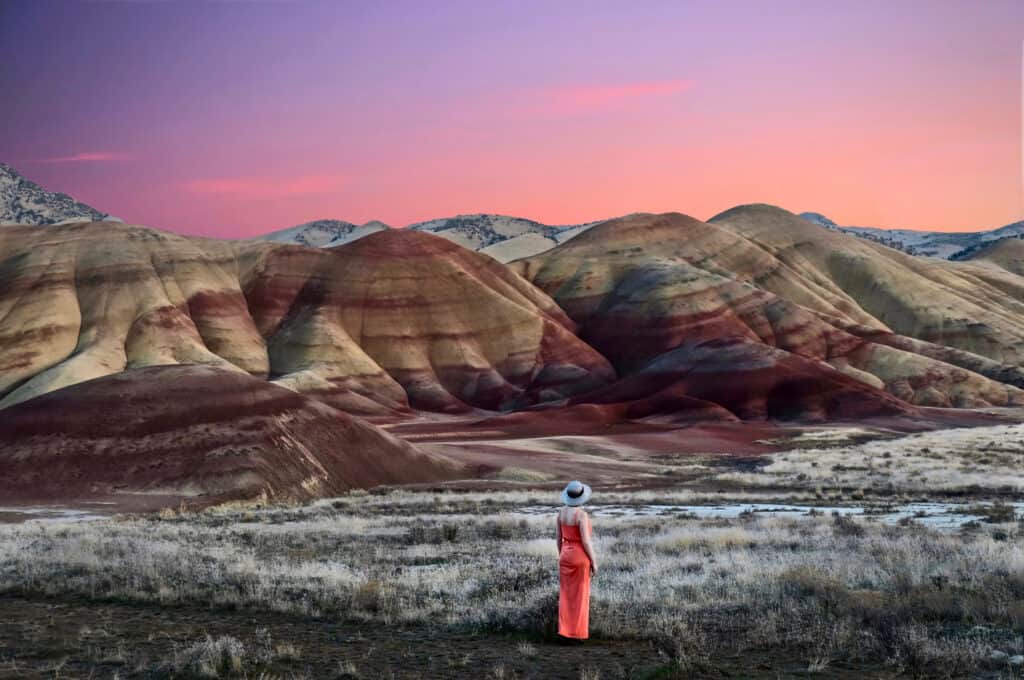
The Painted Hills in Oregon are some of the most unusual and striking natural wonders of the PNW.
The hills’ alternating red, orange, and brown hues are evidence of ancient periods of climate change, water and humidity, and much more.
Additionally, they have trapped thousands of leaves of other fossils that range from 27 to 39 million years in age.
Get here in the late afternoon for a walk around the boardwalk of the John Day Fossil Beds before photographing the painted hills in the evening light. Just be aware that you’ll probably be fighting for elbow room as evening is the most beautiful (and popular) time of day to view the hills.
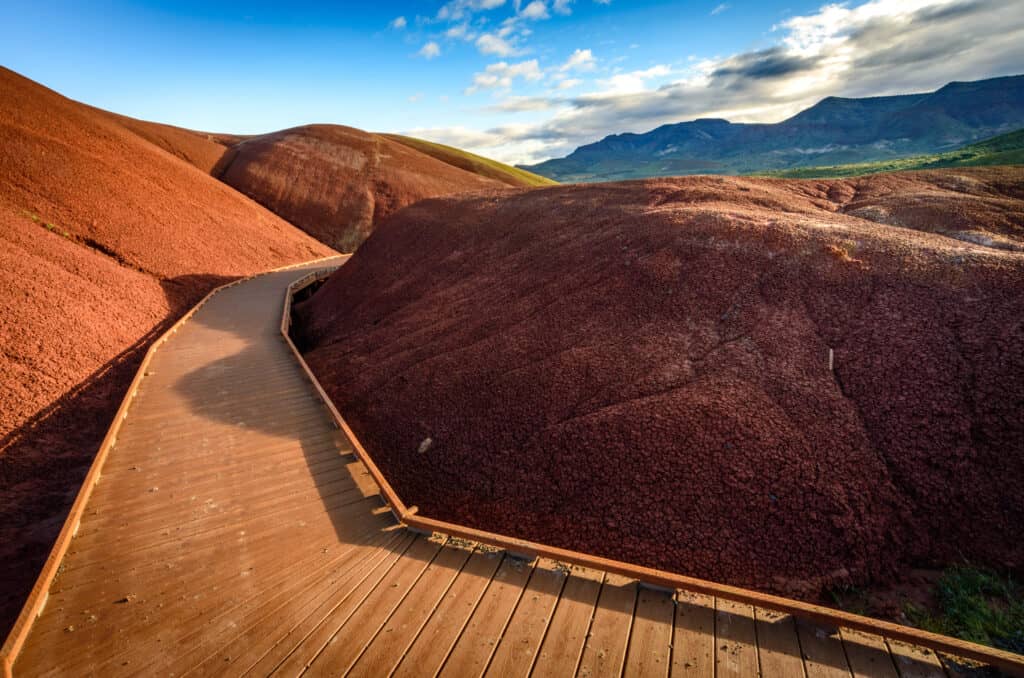
2. Visit The Diamond Craters
Much of the amazing desert scenery of Washington and Oregon was crafted by massive forces of nature thousands of years ago. However, it’s not glaciers that we have to thank this time but volcanic activity.
The cinder cones, lava tubes, and spires in this area are just a few of the remnants of the long-gone lava activity that took place within the 17,000 acres of the Diamond Craters Outstanding Natural Area.
Located just an hour outside of Burns, this alien landscape will make you feel like you’re a million miles away.
3. Star Gaze In The Alvord Desert
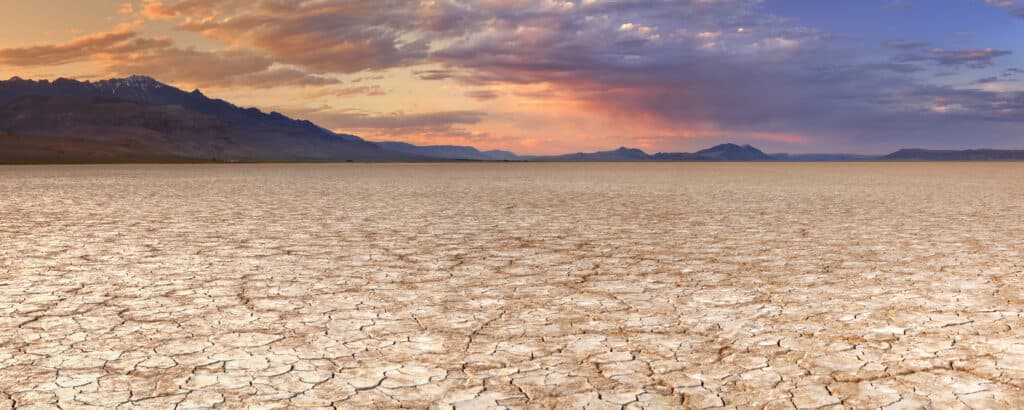
The desert areas of Oregon are remote enough that you’ll feel like you’re on another planet. This is especially true at night when everything is pitch black and there isn’t any light pollution for hundreds of miles.
A great example of this tranquil and unpolluted place is the Alvord Playa where we used to go years ago to star-gaze.
Out on the dry lakebeds at night you will have the experience of a lifetime seeing more stars than you could possibly imagine.
4. Travel The Oregon Desert Trail
If you fancy yourself an adventurer, the Oregon Desert Trail offers 750 miles of sand and dry scenery through the seldom-seen areas of the Oregon Desert.
Running from the far eastern edge of the state, down to the southern border, and then back up to Bend, you’ll get the chance to experience the Oregon Badlands Wilderness, Lake Owyhee State Park, and hundred other shorter trails that have been stitched together to creat this massive throughhike.
While the full trek is not for the faint of heart, regular humans such as myself can pick as much or as little of the trail as possible to get out and enjoy the area.
5. Take A Dip At Smith Rock State Park
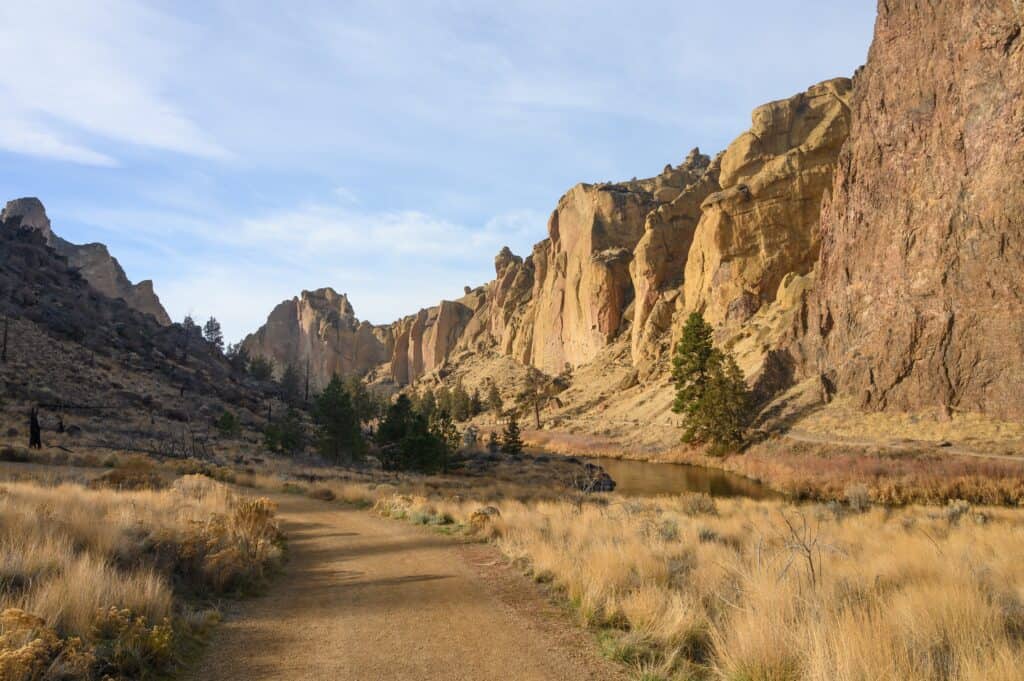
Bend is one of the best outdoor areas in Oregon and Smith Rock State Park is one of the largest nearby attractions.
If you’re interested in rock climbing there are thousands of routes throughout the park up to challenge almost any climber.
If you’re not at home on the rocks, even a hiking exploration of the park can earn you some awesome views. There are golden eagles, falcons, deer, beaver, otters, and all other kinds of wildlife that you can see if you’re lucky.
There are also camping, biking, and swimming opportunities in the park so come without plans for the next week!
Conclusion
At the end of the day, the deserts of Washington and Oregon are, in my opinion, some of the most unique destinations in the state.
While the states of the PNW are not really known for their deserts, there are hundreds of thousands of people that live in these arid areas.
While I do love the rain and pines, it’s always nice to take a break a say hi to the cactuses!
